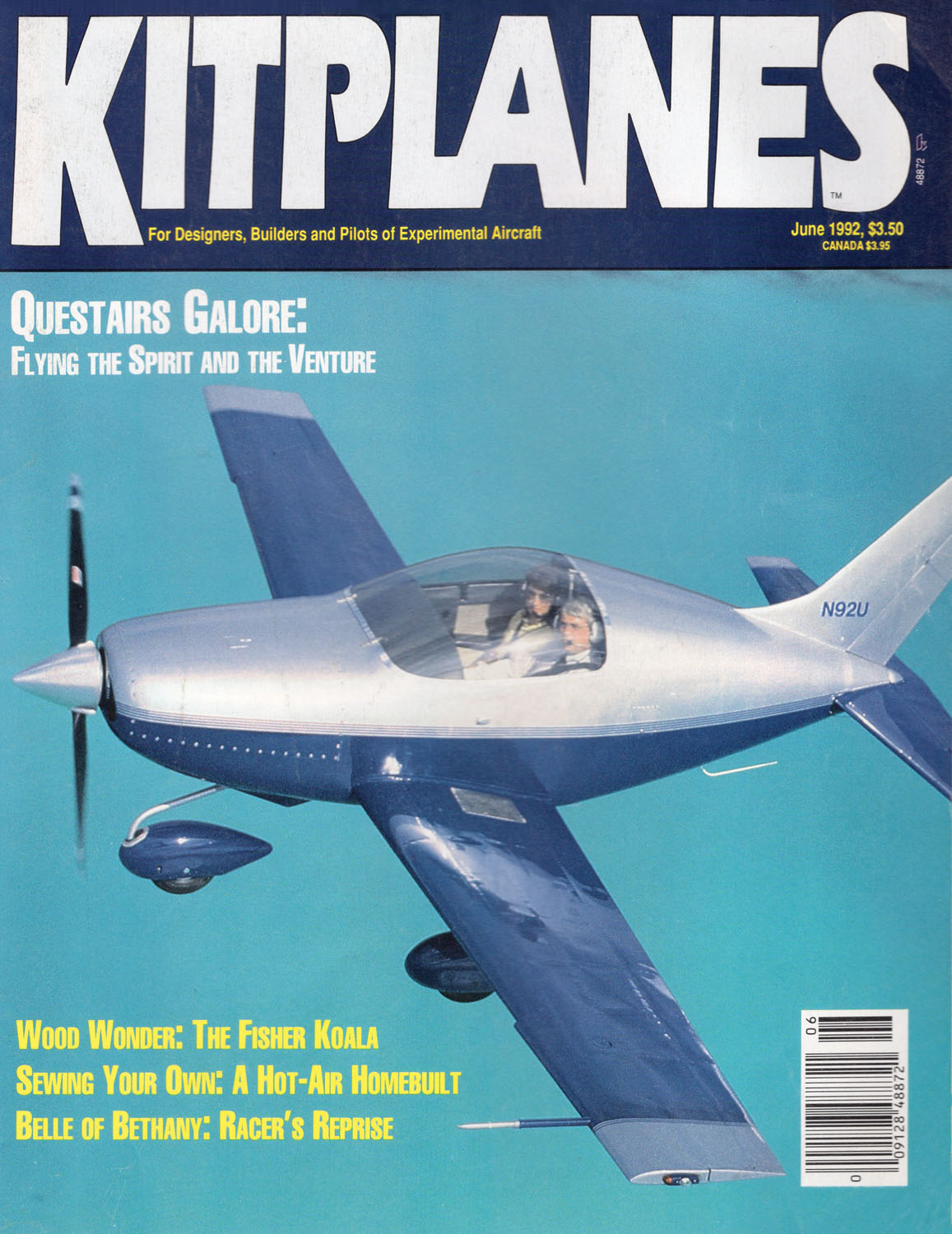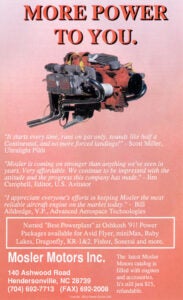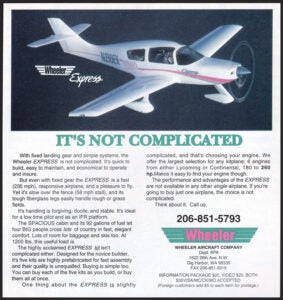Editor’s Note: With this issue, we’re going to begin a loving look back at our past, and with it an abbreviated history of the Experimental/Amateur-Built industry as a whole.
 Our cover aircraft for the June ’92 issue was the fixed-gear version of the Questair Venture, an all-metal design that looked impossibly stubby, too stubby to fly well, even though it did. It came with an impressive pedigree, having been designed by Jim Griswold and Ed McDonough, who worked for Piper on the Malibu project. (That design, which dates back to the late 1970s, is still going strong.)
Our cover aircraft for the June ’92 issue was the fixed-gear version of the Questair Venture, an all-metal design that looked impossibly stubby, too stubby to fly well, even though it did. It came with an impressive pedigree, having been designed by Jim Griswold and Ed McDonough, who worked for Piper on the Malibu project. (That design, which dates back to the late 1970s, is still going strong.)
The Questair lineup started at the top with a 280-hp, retractable-gear egg of a machine capable of prodigious speed. Our cover aircraft was the simpler, lower-cost Spirit that followed. Fixed tricycle gear and a 210-hp Continental IO-360 up front gave it a claimed top speed of 225 mph and a cruise of 213 mph. Kit prices started at $32,000 for the Spirit and $44,000 for the Venture; that’s between $58,000 and $81,000 in today’s money.

Elsewhere in the issue, Geoffrey Jones covered the homebuilt scene in Denmark, Linda Armstrong flew a homebuilt balloon (“This homebuilder’s primary tool was a sewing machine,” she said) and Gary Jones flew the Fisher FP-404 and Super Koala. “You don’t go fast and you don’t get far between fuel stops, but both planes are comfortable and reliable enough to fly as far as you care to go,” he said.
Up front, Editor Dave Martin reported on an agreement between industry and the FAA that the European airworthiness requirements for light aircraft, known as JAR-VLA (Joint Airworthiness Regulations-Very Light Aircraft) would provide equivalent safety to the burdensome FAA Part 23 rules then in effect and prompt many smaller manufacturers to join the fray, including a number of companies then making homebuilt kits. The rules called for aircraft no heavier than 1654 pounds with a stall speed below 45 knots.

JAR-VLA came at a time when the FAA was considering something else called the Primary Category, a simplified regulation set designed for light aircraft and rotorcraft. Back then, in the decade after Cessna stopped single-engine-piston production and Piper was hanging on by a thread, the industry was looking for myriad ways to get new designs into the pipeline. Neither JAR-VLA nor Primary Category would bear fruit, but later ideas with the same aim, specifically Light Sport Aircraft, would make an impact.














Wonder if this will hit in the digital archive ;)?